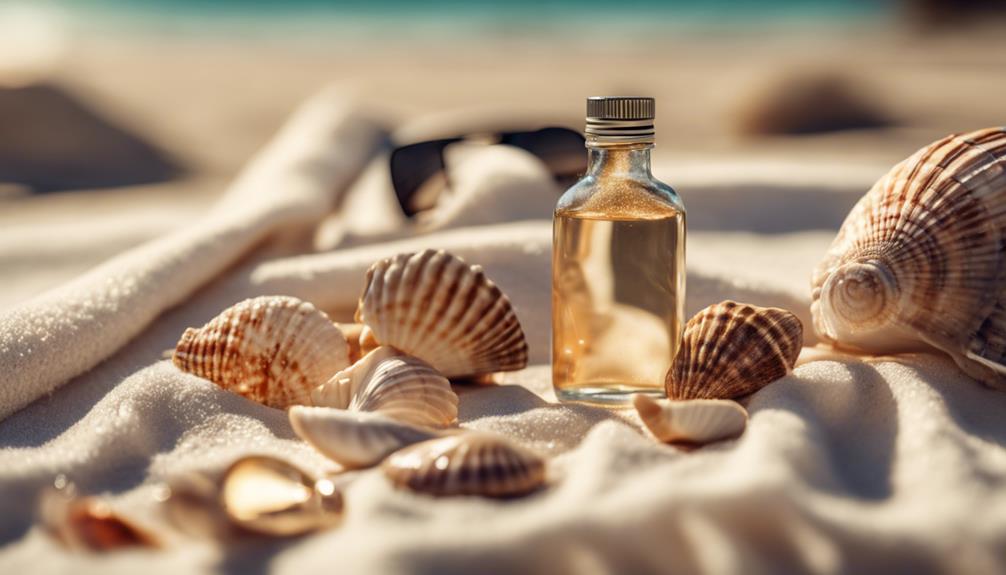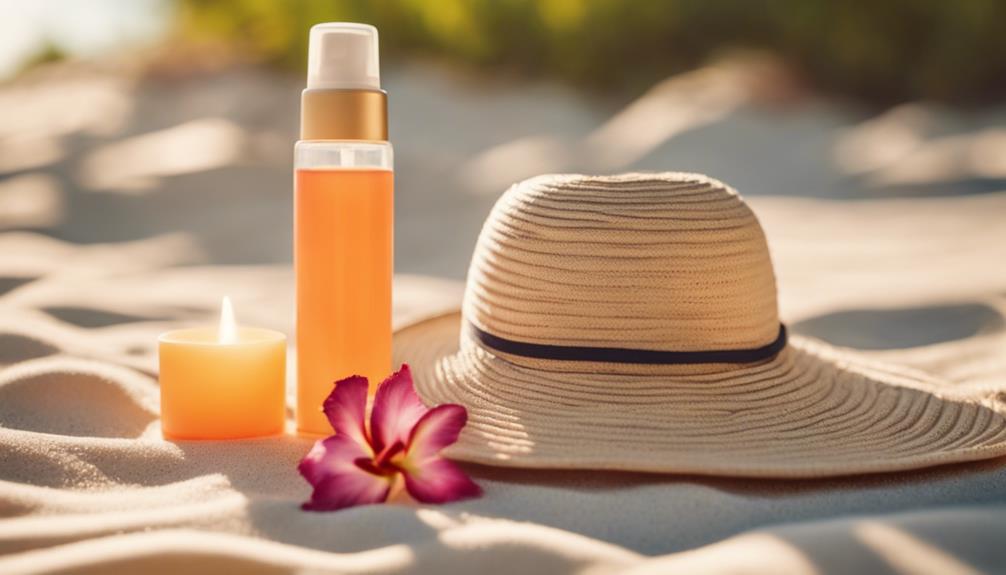When considering stand-up and lay-down tanning beds, it ultimately depends on your personal preferences. Stand-up tanning beds offer fast, uniform results with all-around exposure, making them perfect for people with busy schedules. You don’t have to worry about pressure points or tan lines. On the other hand, lay-down tanning beds provide a more comfortable experience, perfect for those looking to relax during their tanning session. They are also gentler on the skin, which can be beneficial for individuals with mobility issues. Each type of tanning bed has its own advantages, so consider what is most important to you. Keep exploring, and you may discover more insights into these tanning options.
Key Takeaways
- Stand-up tanning beds provide faster results with 360-degree coverage, ensuring an even tan without pressure marks.
- Lay-down tanning beds offer a cozy environment, promoting relaxation and an enjoyable experience during sessions.
- Stand-ups are ideal for busy individuals seeking quick sessions, while lay-downs cater to those looking for stress relief.
- Risk of tan lines is reduced with stand-ups, whereas lay-downs may require careful positioning to avoid uneven tanning.
Overview of Tanning Bed Types
When choosing between stand-up and lay-down tanning beds, you'll find each type offers unique advantages tailored to different preferences and needs.
Stand-up tanning beds allow you to achieve a quick, even tan without pressure points, perfect if you're short on time. You can enjoy 360-degree exposure, ensuring all areas of your skin get equal UV treatment while standing comfortably.
On the other hand, lay-down tanning beds create a cozy atmosphere, ideal for those who want to relax while tanning. They provide a gentler UV experience, making them great for individuals with mobility issues.
Ultimately, your choice will depend on whether you prioritize speed and evenness or comfort and relaxation during your tanning sessions.
Benefits of Stand-Up Tanning
Stand-up tanning offers a quick and effective way to achieve a flawless, even tan without the hassle of pressure points or uneven patches.
You'll enjoy complete freedom of movement, allowing every inch of your skin to get UV exposure for that all-around glow.
Sessions are typically shorter, making it a perfect choice for your busy schedule.
With powerful bulbs, stand-up beds accelerate the tanning process, giving you that radiant look in less time.
Plus, the 360-degree exposure guarantees no missed spots, resulting in a uniform tan.
By minimizing pressure marks, you can feel comfortable and confident while you tan.
If you're looking for efficiency and effectiveness, stand-up tanning is the way to go!
Benefits of Lay-Down Tanning

Lay-down tanning provides a cozy environment that invites relaxation, making it an ideal choice for those seeking a soothing tanning experience. You can lie back comfortably, allowing your body to soak in gentle UV rays without the pressure of standing.
This setup reduces the risk of tan lines while promoting an even tan, which is particularly beneficial if you have mobility issues. Plus, the experience feels like a mini-vacation, letting you escape daily stressors.
The softer UV exposure can be easier on your skin, giving you a pleasant glow without overexposure. Overall, lay-down tanning emphasizes comfort and tranquility, making it a delightful option for anyone looking to unwind while achieving a beautiful tan.
Tips for Optimal Tanning Experience
To enhance your tanning experience, consider selecting the right indoor tanning lotion that matches your skin type and desired tan intensity. An intense bronzer will give you a deeper glow, while a subtle option is perfect for a light tan.
If you're using a stand-up bed, embrace the energetic vibe of your session; for a lay-down bed, focus on relaxation. Always make sure your skin is clean and free from lotions or oils before tanning to achieve an even application.
Schedule your sessions wisely, allowing your skin time to recover between visits. Finally, don't forget to protect your eyes with quality goggles and hydrate your skin afterward to maintain that bronzed look.
Enjoy every moment of your tanning experience!
Effectiveness of Stand-Up Vs. Lay-Down

Choosing between stand-up and lay-down tanning beds boils down to your personal goals and preferences, as each offers unique benefits for achieving that perfect bronzed look.
| Feature | Stand-Up Tanners | Lay-Down Tanners |
|---|---|---|
| Tanning Speed | Faster results | Slower, but gentle |
| UV Exposure | 360-degree coverage | Targeted exposure |
| Comfort Level | Limited relaxation | Cozy and relaxing |
| Ideal For | Busy schedules | Stress relief seekers |
| Risk of Tan Lines | Minimal | Higher without care |
In essence, if you're looking for speed, stand-ups are your best bet. However, if relaxation is key, lay-downs provide a soothing experience, albeit at a slower pace. Choose what suits you best!
Trends in Tanning Bed Use
As you explore your tanning options, staying updated on the latest trends in tanning bed use can enhance your experience and results.
Currently, more people are opting for stand-up tanning beds due to their quick sessions and even coverage. These beds are gaining popularity thanks to advancements in bulb technology that deliver faster and more effective tanning.
On the other hand, lay-down beds are still favored for those seeking a more relaxing experience, particularly among individuals with mobility issues.
Additionally, there's a rising focus on hygiene, leading salons to implement better cleaning protocols.
Don't forget to invest in quality goggles and skin protection products as these trends evolve, ensuring a safer and more enjoyable tanning experience.
Safety Considerations for Tanning

Understanding safety considerations is essential for ensuring a healthy tanning experience, whether you opt for stand-up or lay-down beds.
Always wear protective eyewear to shield your eyes from harmful UV rays.
It's vital to follow recommended exposure times to prevent overexposure, which can lead to skin damage.
Make sure to consult with a tanning professional about your skin type and tanning goals to tailor your sessions accordingly.
Hydrate your skin before and after tanning to maintain its health and prevent dryness.
Don't forget to use indoor tanning lotions designed for your skin type, as they can enhance results and protect your skin.
Frequently Asked Questions
Can I Use Both Stand-Up and Lay-Down Beds in One Session?
Yes, you can use both stand-up and lay-down beds in one session! Just be mindful of your tanning time to avoid overexposure. Combining them can enhance your tanning experience and help achieve an even glow.
How Often Should I Tan for Best Results?
To achieve the best results, you should tan 2-3 times a week, allowing your skin to recover between sessions. Consistency is key, but remember to prioritize skin health and avoid overexposure to UV rays.
Are There Any Age Restrictions for Tanning Bed Use?
Yes, many tanning salons enforce age restrictions for tanning bed use, typically requiring users to be at least 18 years old. It is crucial to check local regulations and salon policies before your tanning session.
What Should I Wear During a Tanning Session?
'Clothes make the man,' but for tanning, less is often more. Wear a swimsuit or minimal clothing to avoid tan lines. Don't forget protective eyewear, and always apply indoor tanning lotion for ideal results.
Can I Tan if I Have Sensitive Skin?
If you have sensitive skin, you can still tan, but take precautions. Use a gentle indoor tanning lotion, limit your session time, and consult a professional to guarantee a safe and comfortable tanning experience.
Which Tanning Method is More Effective for Achieving Flawless Results?
When it comes to achieving flawless tanning results, proper flawless tanning skin prep is essential. Both spray tanning and using tanning beds can be effective methods, but it all starts with the right preparation. By exfoliating, moisturizing, and ensuring your skin is free of any products, you can achieve a flawless tan.
Are Lay-Down Tanning Beds More Likely to Cause Overuse Warning Signs?
Lay-down tanning beds can potentially increase the risk of tanning bed overuse warning signs such as skin irritation, burns, and premature aging. The prolonged exposure to UV rays in these beds can lead to overuse, so it’s important to be mindful of the potential risks associated with using them.
Conclusion
Ultimately, the choice between stand-up and lay-down tanning beds boils down to your personal preference.
If you're like Sarah, who craves a quick, even tan during her lunch break, the stand-up bed is perfect for you.
But if you're more like Jake, who finds relaxation in a cozy lay-down session after a long day, that's your go-to.
Whichever you choose, make sure to prioritize safety and enjoy your journey to that sun-kissed glow!










